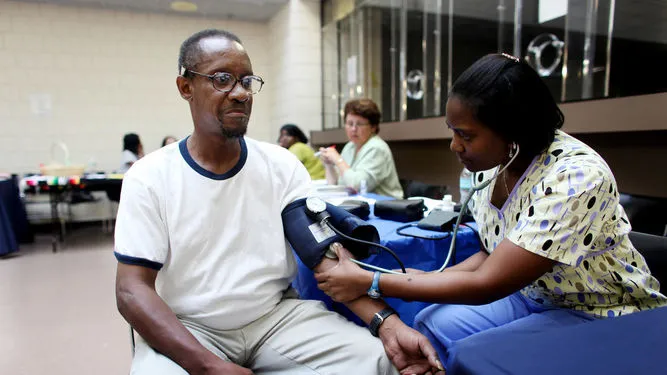There are five pathologies that represent 'terror' in terms of expenses for American public health.A thorough research of the scientific journal JAMA concludes that these disbursements of public budgets have increased considerably and already suppose 17% of the total public items.
According to data from the Organization for Economic Cooperation and Development (OECD), corresponding to 2014, the United States is the developed country that is the highest percentage of its gross domestic product dedicated to health care: 16.58%, exceeding countries such as countries such as countries such as countries such as countries such as countries such as countries such as countries such as countries such as countries such as countries such asSwitzerland, Japan, France and Germany, who dedicate 11%.Annual per capita health expenditure in the US reaches $ 9,024.
In December 2009, the Senate approved the patient protection law and affordable health care, which established the health reform popularly known as 'Obamacare'.The law entered into force in January 2014. Since then, the percentage of people who did not have medical insurance was reduced from 20% to 13%, a historical figure in that country, thanks to the fact that some 20 million citizens could be secured that did notThey had health coverage.
The study published by JAMA magazine first puts into consideration that Americans practically do not know how health spending varies, depending on the age and course of time.Then it stops in each of the most expensive diseases for the public health system.Reducing this sidereal cost of public health will be one of Trump's objectives from next Friday.
First there is diabetes mellitus, which generates an expense of 101.4 billion dollars.They are followed by the coronary ischemic failures, with 88.1.The third position in terms of costs is back and neck ailments, which are 87.6 billion.Fourth place is hypertension, which drags an expense of 83.9 billion.Thus, the falls close the first five costs to the American treasury, with 76.3 billion dollars.
In terms of diabetes, the disease has already become a real epidemic that, according to another study published by the Journal of the American Medical Association, already reaches half of the adults living in that country, if included in the figureTo those who suffer from prediabetes, a condition in which the individual is one step away from contracting chronic disease.
Diabetes is a disease that is due to multiple factors.Although it is common to listen, see and read that physical inactivity, smoking and high fat and sugars are its direct causes, experts consider genetics to fulfill a fundamental role when measuring who is more prone tosuffer it.
On the other hand, the diseases that generate the most cost today are not the same that progressively increase their incidence.Therefore, autism cases are the ones that grow the most, by up to 17.6 percent.It is followed by the pathologies caused by the lack of vitamin A, which grow a 14.7 percent;Hyperlipidemia, with 10.3 percent;Tropical and malaria diseases, at the rate of 9.9 percent, tied with obesity.In fifth position of this percentage ranking are interstitial pulmonary disease and sarcoidosis.
According to a study by Commonwealth Fund, the sidereal cost that health expenditure does not have to do that Americans go to the doctor more than citizens of other countries (which they do not do), but to make more frequent use of expensive technological equipmentand that health care prices as well as medicines are much higher than in other countries.An example: surgery to do a coronary bypass in the United States costs US $ 75,000 and in Holland, about US $ 15,000.
Finally, it can be considered that there are still about 24 million todayof adults without medical insurance in the US and insurance companies begin to resent in their finances a strong impact of the regulations.It is estimated that four of the country's largest insurers will lose about US $ 2,000 million this year, so several of them are planning to drastically reduce the number of states in which they provide services through the 'Obamacare'.
As if that were not enough, the 2017 premiums will increase by 25% in 38 states of the country, according to calculations from the Department of Health and Human Services.


